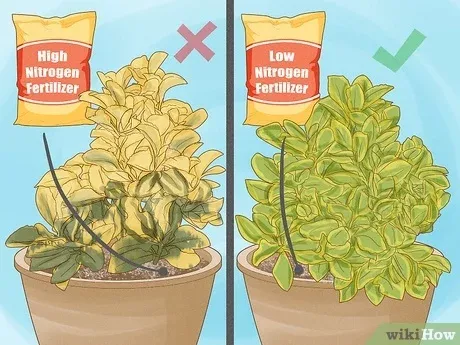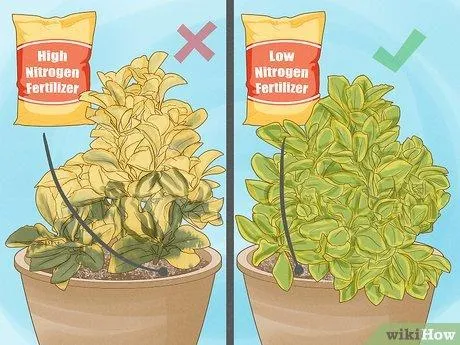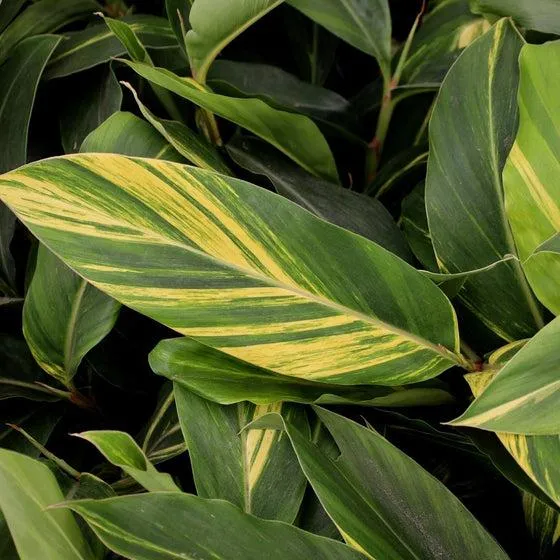A Guide to Creating Variegated Plants
Wondering how to bring some pizzazz to your plants? Creating variegated plants is a fun way to add visual interest to your garden or indoor plant collection. Variegation occurs naturally when plants produce leaves with contrasting patterns, colors or markings. In this article, I’ll cover the basics of variegation and provide tips for making your own variegated plants.
What Causes Variegation?
Variegation happens due to a genetic mutation that causes parts of the leaves to not produce chlorophyll, the pigment that makes plants green. Without chlorophyll, other pigments like white, cream, yellow or pink show through. Scientists aren’t totally sure what triggers these mutations, but light exposure, virus infections and other environmental factors may play a role. Variegation is passed down genetically, so propagating from variegated cuttings or roots is how gardeners capture and maintain these unique patterns.
Types of Variegation
There are a few different types of variegation you may see:
- Margin variegation – Leaf edges are a different color than the center.
- Sectored variegation – Distinct color sections appear randomly on leaves.
- Embossed variegation – A lacy pattern looks pressed or Stamped into leaves.
- Tip variegation – Color appears at leaf tips and tends to fade with each new leaf.
The exact patterns can vary widely even within the same plant. This unpredictable nature is part of what makes variegated plants so fun to grow!
Propagating Variegation
To create your own variegated plants, you’ll need starter materials from an existing variegated plant. Here are some common propagation methods:
Cuttings
Take 4-6 inch stem cuttings from the mother plant, removing leaves from the bottom half. Dip the cut ends in rooting hormone and plant in a moist soilless mix. Keep the soil lightly moist and place in bright, indirect light. Within a few weeks, roots should form and you’ll have baby variegated plants to transplant!

Division
Some variegated plants like hostas can be divided every few years to propagate. In early spring or fall, dig up the entire clump and tease or cut apart the crowns. Each division with 3-5 eyes planted 4-6 inches deep can become a new plant. Water well after planting and give them time to establish before full sun.
Tissue Culture
With specialized lab equipment and techniques, plant tissue samples can be sterilized and grown as masses of cells in sterile test tubes. Over time, new plantlets form that can be potted up. This allows rapid multiplication but requires lab skills and facilities. It’s how many commercial nurseries mass produce new varieties.
So in summary, take stem cuttings, divide existing clumps, or try your hand at lab tissue culture methods. With a bit of patience, you’ll be variegating plants in no time!
Maintaining Variegation
While variegation is normally stable, environmental factors can sometimes cause reversion where leaves lose their patterns and turn all green. To maintain strong variegation:
Provide adequate light: Variegated plants need morning or afternoon sun to encourage pigment production. avoiding shade induces green reversion.
Fertilize sparingly: Too much nitrogen can result in all-green growth. Use a balanced, dilute fertilizer at half strength.

Remove all-green shoots: Shear off any leaves that lose patterning to prioritize variegated growth. Discard prunings to prevent green spreading.
Limit stress factors: Too much heat, cold, drought or overwatering can cause instability. Give optimal growing conditions indoors or out.
With kind of a “hands off” care approach, most variegated plants will hold their patterns for years. The odd all-green branch may pop up now and then but can usually be snipped away.
Troubleshooting Variegation Issues
If variegation suddenly changes or a whole plant reverts, consider potential culprits like light levels, watering, fertilizer or pest/disease issues. Moving a variegated plant to a new spot could shock it, so acclimate it slowly. Sometimes freak genetic mutations occur too – nature can be unpredictable!
Thankfully, if full reversion sets in, propagation methods mentioned earlier allow restarting the variegation through cuttings or division. It may take a season or two but is usually successful. Don’t lose hope – with TLC, variegation can often bounce back.
From my experience starting backyard hosta cuttings, providing the right rooting conditions is key. I’ve had success using a peat pellet starter system – it creates humidity without saturating the soil. After a month, fuzzy white roots emerged and the babies were ready for pots. Kind of a fun, low-effort project!

I hope these tips help give you the variegated vibes you’re looking for in your garden. Growing unique patterns adds so much visual interest. Hopefully you’ll see awesome results whether starting from store plants or your own propagated cuttings. Let me know if you have any other questions!
Tips for Creating a Variegated Plant
| Plant Type | Care Tips |
|---|---|
| Philodendron | Philodendrons come in many variegated varieties and are low maintenance. Give them bright, indirect light and water when the soil is dry. |
| Pothos | Pothos are another great option. Their trailing vines can add visual interest. They thrive in low light and don’t need much water. |
| Peperomia | Peperomias have unique wedge or heart shaped leaves. They come in green and white or red and white variegated varieties. Keep the soil moist and provide moderate light. |
| Chinese Evergreen | Chinese evergreens have waxy,Speckled leaves. They bring bold texture and color to your space. Water infrequently and keep the soil slightly moist. |
FAQ
-
What is variegation in plants?
Variegation basically means sections of a plant’s leaves or stems have a different color than the rest, like white splotches on green leaves. This happens due to pigment disturbances in the plant cells.
-
How can I create a variegated plant?
There are a couple techniques you can use to get a variegated plant. You can propagate – or multiply – from variegated sections of parent plants. Another option is to experiment with plant hormones, which sometimes cause mutations resulting in variegation. One plant pro told me these hormones may encourage odd color variations.
-
Which plants commonly show variegation?
Many popular houseplants tend to sport variegation on occasion. Pothos, Philodendron, and Spider Plants seem to produce variegated growth fairly often. Certain cultivars of hostas, begonias, and African violets are also marketed for their stable variegated patterns. Monsteras and Ficus may also develop white splotches.
-
How will variegation affect plant growth?
The variegated sections often grow more slowly due to lacking full chlorophyll. Some varieties are also less hardy and may die back more during winter dormancy. On the other hand, variegation doesn’t necessarily hurt the plant and can add nice visual interest! It’s kind of like giving the plant highlights.
-
Should I move a variegated plant to a different spot?
Where you put a variegated plant depends a bit on the variety. For some, low light helps the white sections flourish and avoids sun scorching them. However, too little light may cause the variegation to fade over time. Another choice is to rotate it weekly to give all sides optimal sun exposure. A south window brings out vivid contrast in many variegated beauties.

-
How can I get more variegated growth from cuttings?
To propagate more of the coveted variegation, take stem or leaf cuttings only from the whitest, most brightly splotched parts of the parent plant. Strangely enough, I read that dipping the cut end in rooting hormone may kickstart even wilder colored mutations to appear on new growth. Still, variegation isn’t fully predictable.
Hope this FAQ helped shed some light on how to care for and propagate fun variegated plants! Let me know if you have any other questions. I love learning about new plant varieties and unusual flower cultivars from passionate gardeners.
